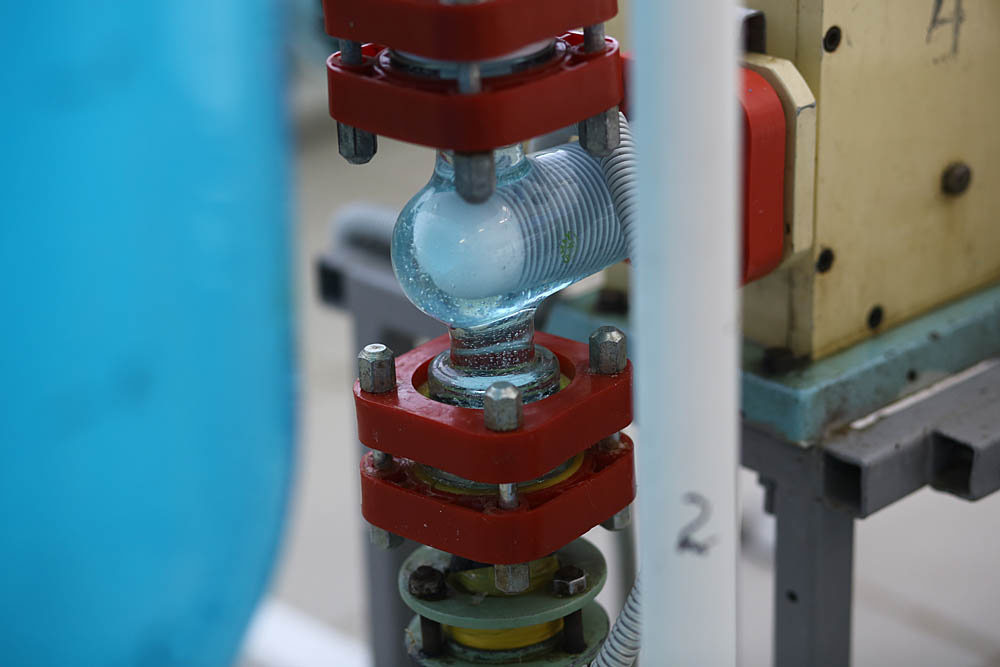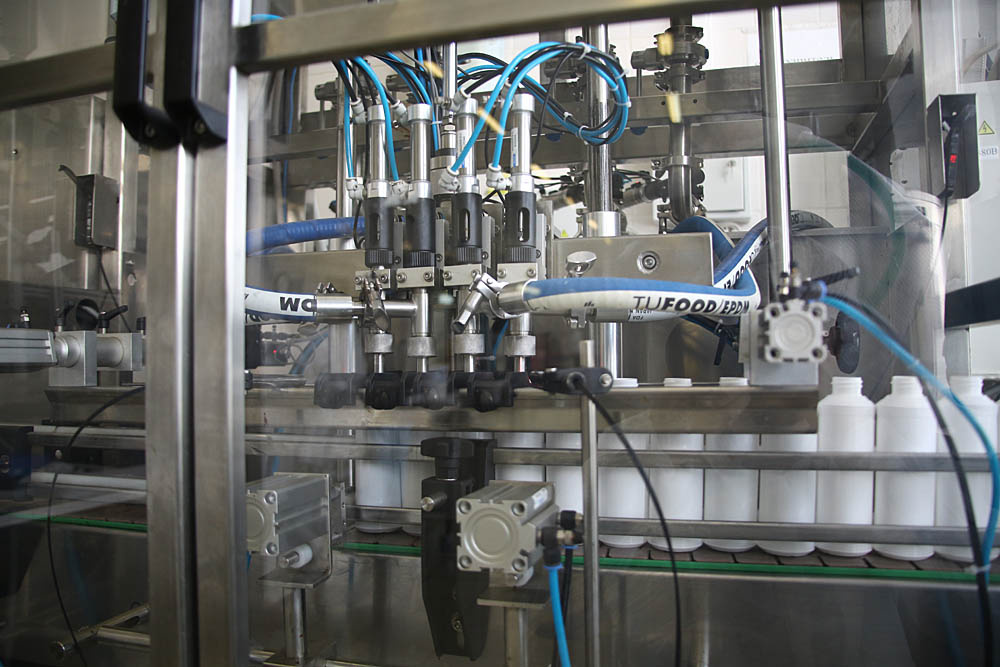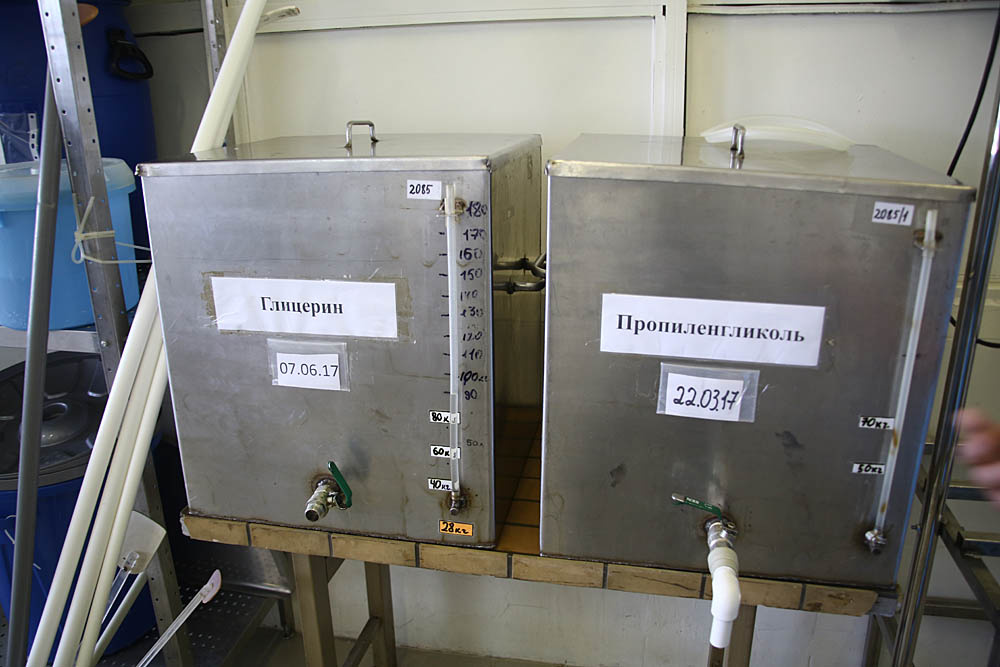How are medical gels produced in small batches

Remember the gel, which you smeared belly during an ultrasound? This is a rather interesting polymer structure, which is designed to provide a sound-conducting environment and at the same time a minimum of side noises for the device. Similarly - gel for ECG, only there is a conductive medium. Technically, these gels are not very different from a number of gels for hardware cosmetology and for other narrowly specific medical problems. For example, there are gels that are made to penetrate the skin as much as possible (the epidermal layer), they serve as a transport for medicines during, for example, ultrasound treatment procedures of the otolaryngologist.
We have been doing such specific things in Russia for about 20 years. Now I will show the old small-scale production and tell you about a number of its features. We also have tonnage production for medicine, which is more modern in terms of equipment, but there the orders are more stable and do not require rebuilding of lines every day. But when you need 50 bottles of a certain gel for a year to solve one rare medical problem - this is for us. Let's start.

')
The main component of the gels is water. In a week, we produce about 50 tons of finished products in production and spend about 150 tons of water. In water, the main thing is proper preparation. Reverse osmosis alone reduces the output mass by 2/3. In our case, deionized water goes through several stages. For any product, the main stages are the same: it is a preliminary cleaning of the most obvious things, then a carbon filter for large foreign molecules and mechanical particles, then resin filters. As a result, cleared of salts and iron. Then reverse osmosis membranes for small molecules that are smaller than a micron.

Then the water goes to the storage tank.

We need dielectric water, so there is another filter already immediately before using water in the gel recipe. This is in case if something is added during storage or transportation during production. We estimate the quality of water by the absence of mobile ions (the conductivity is very low). Therefore, in addition to biological methods, we banally control its conductivity - up to 10 microsiemens per centimeter are needed. Although we try a maximum of 2-3.
We tried to regenerate the filters several years ago on our own, but in the end we abandoned this process and gave it to an external company. As the filters get dirty, they just bring in new ones.

The basis of the gel is made from water, polymer and several other components. In the photo above - capacity with swelling polymer. The preparation of the suspension is the swelling of the second main component other than water, the polymer, which forms this gel mass in any case. Most often we are talking about polyacrylates for medicine. We use their subspecies - carbomers with long molecules. Chinese gels are made on cheaper polyacrylates, they are less uniform. Toward the end of the process, the suspension may look like this.

Then other substances are added to the resulting base. To achieve their uniform distribution in the gel, such reactors are used here (we have here from 50 to 200 kg).

The reactors are mixing liquids. This process takes 3-4 hours. The better the composition of the components (better polymer) and the more correct and longer the process in the reactor, the more uniform the gel. The more evenly the gel, the less noise and loss, for example, during ultrasound.

Each operation is recorded in the ERP and monitored. At each workplace there is either a tablet or a computer running ERP.

We have a very important control of what is happening on the line, the control of cleaning; production is constantly rebuilding processes, because they are preparing 25-pound and 50-pound batches of rare things for cosmetology. But the same gels for the eyes (in particular, "Blefarogel") are made in a different production tons: there are far fewer manual operations, and instead of 150 product names there are only about a dozen. Final production - packing in bottles.
In the current situation, from a 700-pound reactor through a hose using a screw pump is transferred to the drive and, accordingly, packaged. Bottles come.

In them extruders fall.

Bottles are filled and go to the closure.


Then pasting labels.

Then the finished product undergoes selective quality control, the arbitration samples are saved, and all this goes to the warehouse. But there is a nuance.

The line is made in China (there are no others on the market), so it often has to be repaired right at work. Accordingly, the tool box does not even close or be carried away, it stands under the table with the operators.
UF-lamps are on the whole production area: night - open, day lamps - in the case with rotational ventilation.



In a clean area, you need to wear a protective suit, change your shoes and step on a sticky mat before entering.


We use different disinfectants. We need indicators to determine whether we have prepared the correct concentration of disinfectants.


The indicator is lowered on Wednesday, the time on the stopwatch is monitored, taken out, the color is compared. Important things for hygiene are attached above the sinks.

The warehouse is already a simpler zone according to the admission, here you can walk in usual replaceable clothes (but not street clothes).



This is the utility room, where there are mechanisms for transferring propylene glycol to production.

This is how it looks in production through the wall.

Microbiological air analysis is also performed at the exit from this room. Samples and reagents are stored in the refrigerator.

Weighing is done here.



There is a development. The main laboratory is in another place, but there is a small laboratory in production for measuring finished product data and quality control. The main laboratory is about 50 square meters (currently expanding), the “control” is about 15.




And there is an office with a bunch of different samples.


Production is loaded evenly, there are no seasons. When there is no current order, we work in a warehouse, but still almost everything is immediately dismantled.
In this building we have almost 5 years. The production itself is 20 years old. It all started from the laboratory at the Institute of Medical Polymers. At the Ministry of Health. In this laboratory, the first product development was done - ultrasound gels. Doctors agreed with polymer technicians. Then it was a rarity. There was a restructuring, and there was no need to choose what you studied there at universities. It was necessary to rebuild and work. And so they went, they went, they grew to such an enterprise, which, in principle, of course, is not a monopolist in Russia, but for a very long time our gel was unique in a number of important indicators for medicine. It is very good even now, but now there are a lot of other manufacturers, in particular, cheap analogues on lower-quality Chinese raw materials. We are very carefully carried out the development of the formulation, using only European components and raw materials, and therefore it can, of course, be slightly more expensive for the consumer. At first, we worked on the domestic polymer, but it was something. Peter produced and Nizhny Novgorod. These are all polyacrylates of domestic production, but this is not at all like that. Then very quickly, when we became more creditworthy, we began to buy, of course, the main components already in Europe. Tried India, Asia, in particular, Taiwan - not suitable. We are very concerned about the quality of raw materials and the stability of this quality. And they happen to be hooligans. Europe supplies stably.
Source: https://habr.com/ru/post/370743/
All Articles